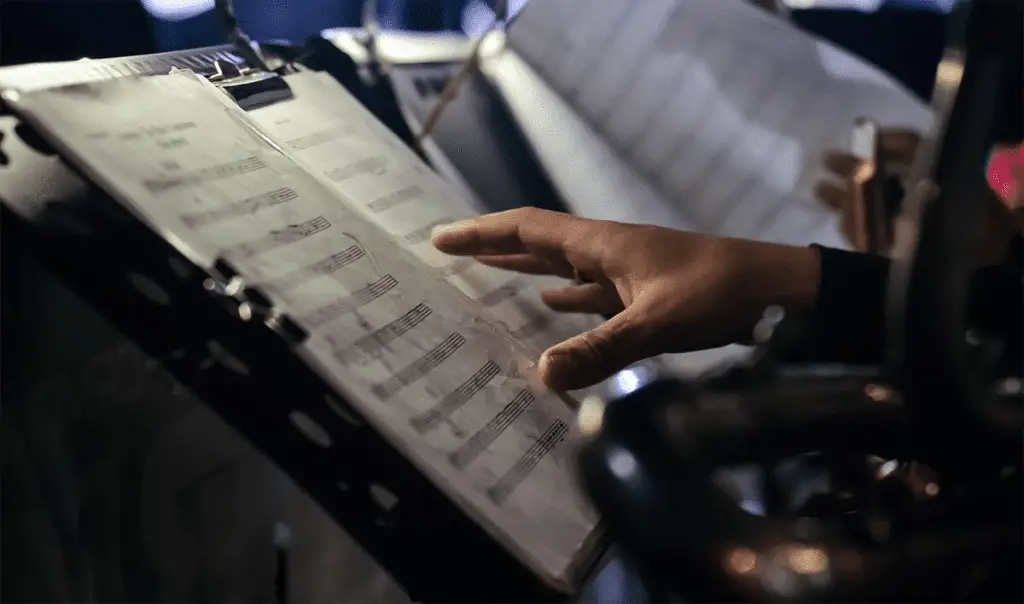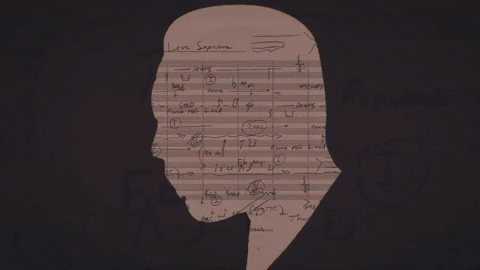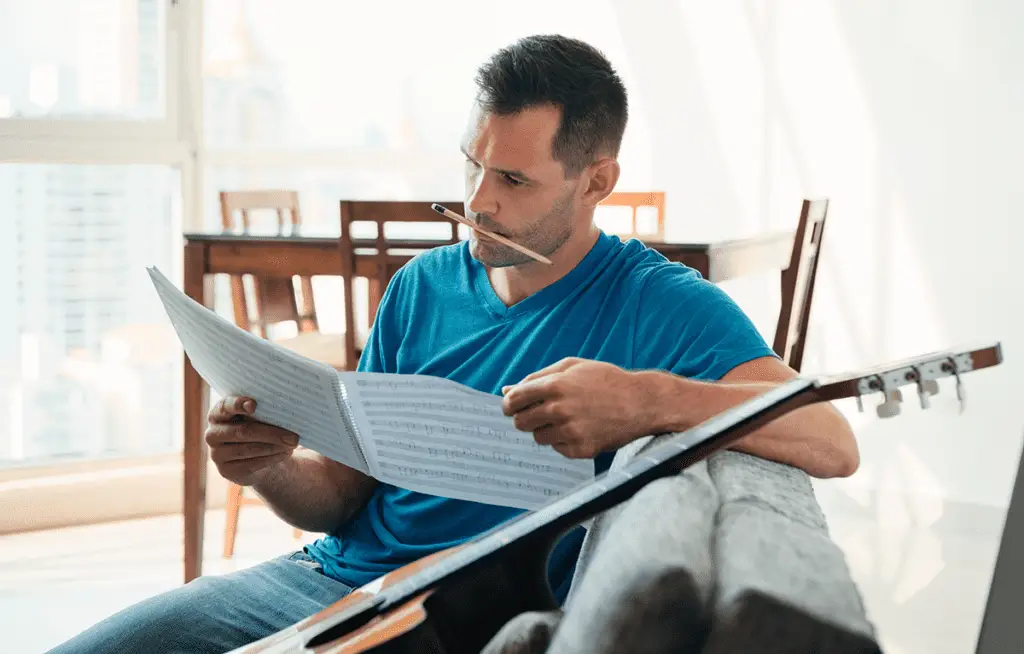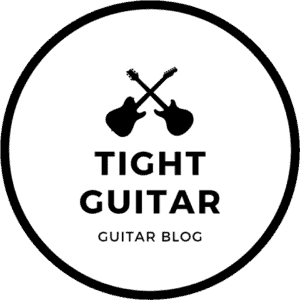
Reading sheet music is an essential skill for many musicians and composers. Unlike what many people think, it is not meant just for classical players but also for musicians who meddle with popular music. It is also a genuine part of professional music work.
To read sheet music, you need to familiarise yourself with a few symbols and markers that help navigate the reader through the musical piece. These musical traffic signs are the Da Capo (D.C), the Dal Segno (D.S), the Coda, and the fine.
If you tend to get confused by those weird symbols and marks in sheet music, this article is exactly for you. We have come up with a simple and easy way of reading and understanding these musical orientation marks, so let’s get it right once and for all.
What is the purpose of repeat marks in music?

The purpose of repetition marks in music is to shorten the sheet music and make the musician’s reading experience more convenient. When using repetition marks, we can squeeze more information into a smaller space on the page.
Using these repetition marks will save paper and time. Plus, the musician will have fewer pages to handle when trying to read the music.
To fully understand how to read sheet music, we need to divide this article into three parts:
1. The musical bar – there are four types of bars. Each one tells the musician what to do: keep on playing, stop or repeat a particular segment.
2. Types of repetition marks in music – There are a few ways we can repeat segments of sheet music: chord repetition symbol, bar repeat, and Volta brackets.
3. The Latin repeat signs in music – Da Capo, Dal Segno, Coda, and Fine.
What is a measure in music?
A measure is a single segment of the music. It is bordered with two lines, one on each side, and contains a specific amount of beats. The measure is subjected to a certain tempo and a specific time signature.
A measure is a bar. These are two different words to describe the same thing. In pop music, musicians tend to use the word “bar”, and in classical music, the term “measure” is more common.

How many beats are in a bar?
The most common amount of beats in a bar is four quarter notes, but there can be many other ways to divide the musical bar. The time signature, which is the two figures stacked upon another at the beginning of the piece, will tell us the size of the beat and the number of beats in each bar.
The four types of bars in music
A bar with single border lines
The lines on each side of the bar define the start and end of the bar. When you see these lines, you simply need to keep on playing according to what’s written. However, the lines do mark the beginning and the end of the count!
Double Bar Line
A double bar line marks the end of a section in a musical piece (like a verse, chorus, or a C-part). When you see this mark, don’t stop playing, it is there solely for orientation. Like the single-line bar, the doubled lines also mark the beginning of a new count cycle.
End Bar Line
The end bar line marks the end of the musical piece. It consists of a thin line on the left side and a thick line to the right. When you see this bar, it means you need to stop playing (after you finish playing the content of this bar).
Repeat bars
Repeat bars mark a particular segment of the musical piece, ordering the reader to repeat it. They consist of a starting bar and an ending bar that indicate the beginning and end of the segment that should be repeated. If you encounter only the closing bar of the segment, the repetition will start at the beginning of the musical piece.
The repetition bars look a little different than the other bars. They consist of one thick line, one thin line, and two vertical dots.
The bar repetition sign
The repetition sign copies one bar to its subsequent bar. It can also do the same action with a set of two adjacent bars, copying them into their following position. In music notation, we use repetition signs instead of writing the same chord or line repeatedly.
The repetition sign is positioned in the middle of a bar (and consists of one diagonal line and two dots) to copy one bar or between two bars to copy a set of two bars (and consists of two diagonal lines and two dots).

What are Volta brackets?
Volta Brackets (also called time bars) are rectangle-shaped brackets marked each one with numbers. They are used for repeating a specific segment of the music while interchanging the ends of the duplicated segments.
The Volta brackets are pretty common in popular music and will significantly shorten the sheet music length.
Other repeat signs in music

The following section deals with a set of musical marks that tend to confuse a lot of musicians – the Da Capo, the Dal Segno, the Coda, and the fine. These marks and symbols are more flexible than other repetition signs and will give the writer more freedom to repeat, move, skip, or dissect certain parts within the musical piece.
These symbols might look a little intimidating at the beginning, but don’t worry! Once you get the hang of it, it becomes pretty easy.
Each of these symbols and marks is simply the beginning of a segment or the ending of a segment, but each acts differently.
Da Capo (also called D.C)
Da Capo (often abbreviated as D.C) is a musical repetition symbol. The literal meaning of Da Capo in Latin is “from the beginning”. Therefore, it is an order for the reader to go back to the beginning of a musical piece.
The Da Capo is located at the end of a bar and will be addressed only after reading the content of that same bar. It will always pair with a Coda sign (D.C al Coda) or a fine sign (D.C al fine). The D.C al Coda literal meaning is “from the beginning to the Coda”, and D.C al fine means “from the beginning to the fine”.
Dal Segno (also called D.S)
Dal Segno (often abbreviated as D.S) is a musical repetition symbol. The literal meaning of Dal Segno in Latin is “from the sign”. Therefore, it is an order for the reader to go back to the Segno sign and continue reading from that point. The D.S mark will be located at the end of a bar and will be addressed only after reading the content of that same bar.
Da Segno will always pair with a Coda sign (D.S al Coda) or a fine sign (D.S al fine). The D.S al Coda literal meaning is “from the sign to the Coda”, and D.S al fine means “from the sign to the fine”.
The Dal Segno sign consists of two parts, the order to return to a certain point (D.S al Coda/fine) and the actual point of return (Segno). Thus, the Segno sign acts as a pin dropped in a specific point of the piece, and it looks like this:
The Coda
In music notation, the Coda acts as a portal to another part of the same musical piece. The literal meaning of Coda in Latin is “tail”. Therefore, it is an extra part of the musical piece.
The Coda will always appear twice, once at the exit point of the “portal’ and a second time at the entrance to the new segment (the tail). The Coda symbol looks like this:
Fine
In music notation, the fine sign marks the end of a musical piece. The literal meaning of fine in Latin is “end”. Therefore, it will enable the writer to end the musical piece at every point he chooses.
The fine sign will always pair with a Da Capo sign (D.C al fine) or a Dal Segno sign (D.S al fine). The D.C al fine means “from the beginning to the fine” and the D.S al fine literal meaning is “from the sign to the end”.
The difference between D.C and D.S

The only difference between Da Capo (D.C) and Dal Segno (D.S) is the point of return. With Da Capo, you should return to the beginning of the piece, and with Dal Segno, you should return to the Segno sign.
Many musicians get confused between these two terms. Always remember the letter S, which represents the Segno. If it is not there, return to the beginning.
Ok, now after we know what every symbol and term mean, we can understand the formula, which is built out of two parts:
Repeat from D.C / D.S → until you get to the Coda / fine

